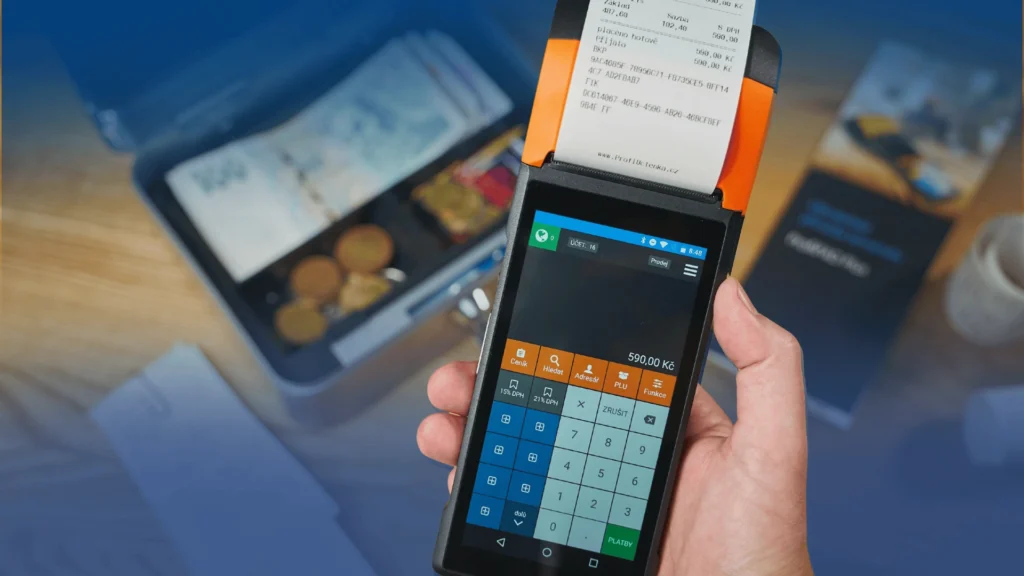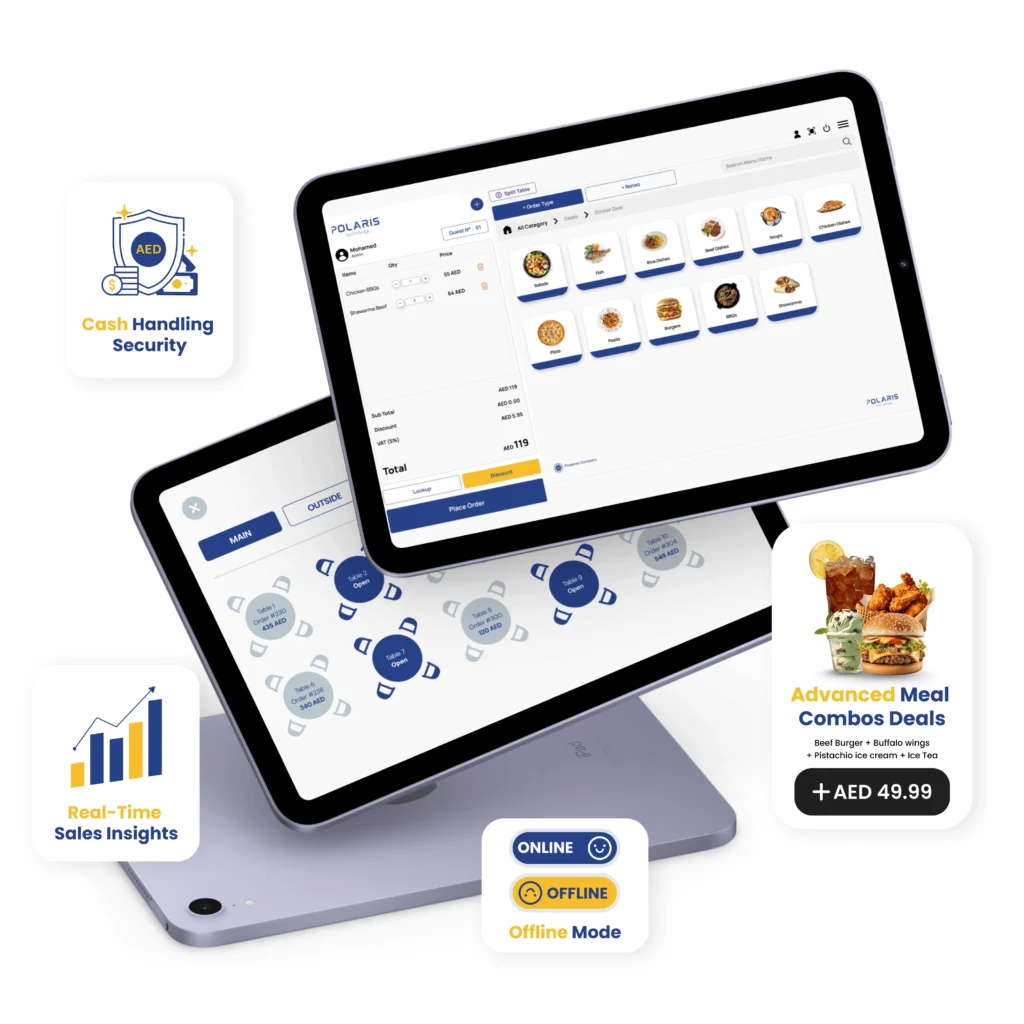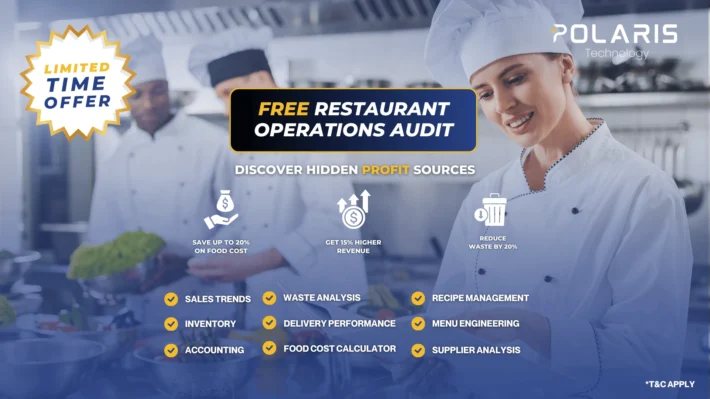5 Tips to Prevent Employee Theft in Restaurants with the Right System

Introduction
Around 75% of restaurant losses are due to employee theft, costing as much as 7% of annual revenue. From fake voids to time theft, the more you try stopping it with traditional methods, the more creative and sophisticated it gets. Yet, with the right restaurant system in place, restaurant theft by internal staff can be prevented. In this article we’ll cover the most common types of employee theft in restaurants, and provide five proven methods to prevent them.
Types of Employee Theft in Restaurants
Restaurant POS Theft
Restaurant POS theft is a common method of employee theft that involves exploiting the capabilities of basic point of sales (POS) systems to pocket real money from customers. The most frequent practices include:
- Voiding legitimate sales – happens when the customer paid for their order, but the staff voids the transaction, while pocketing the money (usually cash).
- Processing false refunds – in this situation the employee uses the POS to return an order, claiming customer dissatisfaction, and cashes in the money.
- Abusing discounts and compensations – happens when employees apply discounts and compensations at their discretion, and keep for themselves the discounted amount. It can also occur when the staff provides a “sweetheart” deal to friends and family, although they are not entitled to provide the applied discount.
Inventory Theft
Inventory theft is another popular method of employee theft in a restaurant. It usually involves the back-of-the-house staff (kitchen, bar or storage) exploiting the inventory, in several ways, including, but not limited to the examples below:
- Stealing ingredients – this means that staff simply take ingredients from the inventory without recording them. This happens in the absence of advanced restaurant software. A proper system connects inventory to real-time sales and staff shifts, making it easy to flag missing stock and trace it back to who was working at the time.
- Over-portioning – this happens when kitchen staff use more ingredients than the recipe calls for, then claim the extra as waste. For example, a chef might use 150g of mozzarella instead of the standard 100g, saying some was unusable. In reality, they may take the extra home. When done repeatedly, this “waste” adds up and quietly but surely drives up food costs.
- Falsifying waste – a similar practice as the above, falsifying waste occurs when staff declares inventory items as spoiled or wasted. For instance, they will mark a perfectly fine steak as “gone bad”, only to take it home at the end of the shift.

Time Theft
Time theft is a more obscure type of employee theft, yet more frequent than expected, affecting the profits of food and beverage (F&B) businesses due to inflated labor costs. Common practices include:
Buddy punching – this means checking in or out for another employee. While thinking you have three staff on the floor, there are only two for a specific time, which means wasted money on labor costs, and possibly inefficiencies on the front-of-the-house.
Extended breaks – this happens when staff take longer breaks without logging out, showing that they are still working, hence they are paid to be on a break.
Late arrivals or early departures – in these situations employees are not working full shifts, but are getting paid for full shifts. “Forgetting” to clock out is another situation, where employees can claim to be paid for extra time at work, although in reality they were not working.
How to Prevent Employee Theft in Restaurants
Using the Right Restaurant Software to Prevent Restaurant Theft
The best way to stop employee theft is by removing the opportunity to do it in the first place, and that starts with the right system. Polaris ERP prevents POS theft, and this is how:
User Permission Controls

Problem it solves: User permission controls prevent unauthorized refunds, voids, discounts, or price edits by lower-level staff (e.g., servers issuing refunds without approval).
Theft attempt blocked: POS abuse like fake refunds, false voids, sweetheart deals.
Dual Authorization for High-Risk Actions
Problem it solves: It adds a barrier for high-value theft. Even if an employee wants to steal, they can’t act alone.
Theft attempt blocked: Large refunds to fake customers, deleting big bills, or adjusting bills after closing.
Drawer Countdown & Blind Close
Problem it solves: Drawer countdown & blind close prevents staff from “adjusting” the final count to match what’s left after skimming.
Theft attempt blocked: Cash skimming, end-of-shift shortfalls covered up manually.
Spot Checking
Random checks are still one of the most effective ways to prevent theft. With Polaris ERP, supervisors can instantly pull real-time sales reports, verify orders, and match cash collected – all from their phone, or in person. One of our clients, an international Asian food chain, applied this method, and prevented staff theft in their restaurants up to 80%.
Monitor Inventory with Real-Time Tracking
One of the easiest ways to lose money is through inventory theft – especially when it’s not linked to sales. Polaris ERP closes that gap by automatically syncing inventory with every sale in real time. This prevention is possible because Polaris ERP enforces standardized recipes, clearly specifying the exact quantity of each ingredient required per dish.
So if one order of chicken curry is sold, the exact portions of chicken, curry base, and rice are deducted from the stock. If ingredients go missing but sales don’t match, the system flags it. That means no more over-portioning, fake waste, or “forgotten” items walking out the back door.
Real-Time, Automated Analytics Reports
With smart analytics, you can instantly see patterns in employee behavior. Excessive voids? Unusual refunds? Discount patterns that don’t match traffic? It’s all flagged in real time, matched with the staff who authorized such transactions, allowing F&B gate keepers to act fast. You don’t have to dig for answers. An advanced system like Polaris ERP surfaces them for you.
Payroll with Geo-Location Clock-in/out
Polaris ERP’s HR module includes geo-location tracking that only allows clock-in/out when employees are physically near the restaurant. That means no buddy punching, no fake overtime, and a lot more accuracy in your payroll. And yes, it works across multiple branches, so multi-location restaurant groups can stay in control and avoid losing thousands dirhams monthly, to labor costs.
End Notes
Employee theft in restaurants costs F&B businesses tens or even hundreds of thousands of dirhams annually if not caught on spot and properly monitored. Polaris ERP helps restaurant owners catch these issues early and put a stop to losses before they get out of hand.
You may also be interested in:
Advanced Restaurant POS System UAE
Ready to start preventing employee theft in your restaurant?
Book a free demo
2 Comments
Comments are closed.




[…] A POS system for bars and lounges ensures billing accuracy, prevents over-pouring, and reduces stock theft. Real-time sales monitoring and age verification tools help businesses serve faster and […]
[…] 12. User Access & Security […]